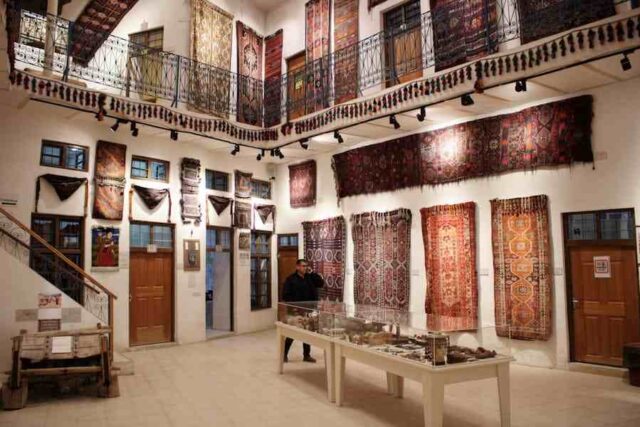Persian rugs, also known as Iranian carpets, have captivated the world for centuries with their intricate designs, vibrant colors, and unparalleled craftsmanship. Revered as both functional art and cultural heritage, Persian rugs embody a legacy of tradition, artistry, and cultural expression. What exactly makes Persian rugs so special? This article explores the key attributes that distinguish Persian rugs from other types of carpets and elevate them to an iconic status.
A Legacy Rooted in History
The history of Persian rugs dates back thousands of years. Evidence of carpet weaving in Persia, modern-day Iran, can be traced to the Achaemenid Empire (550–330 BCE). Over the centuries, Persian rug weaving evolved into a sophisticated art form, influenced by the diverse cultures and dynasties that ruled the region. The Safavid dynasty (1501–1736) is particularly noteworthy for elevating carpet production to new heights, with royal workshops producing masterpieces that were both functional and decorative. These rugs became prized commodities in international trade, cementing their reputation worldwide.
Masterful Craftsmanship
One of the defining characteristics of traditional Persian rugs is their exceptional craftsmanship. These rugs are primarily handwoven using time-honored techniques passed down through generations. The process begins with the selection of high-quality materials such as wool, silk, or cotton. Persian wool, often derived from the region’s sheep, is prized for its softness and durability. Silk rugs, known for their luminous sheen and intricate detailing, are considered the epitome of luxury.
Weavers meticulously knot each rug by hand, employing one of two primary knotting techniques: the Persian (or Senneh) knot and the Turkish (or Ghiordes) knot. The Persian knot, used predominantly in Iran, allows for greater precision and intricate detailing, enabling the creation of complex patterns and motifs. Depending on the size and intricacy of the design, a single rug can take months or even years to complete, a testament to the dedication and skill of its artisans.
Intricate Designs and Symbolism
The designs of Persian rugs are as varied and rich as the cultures and regions of Iran itself. Common motifs include floral patterns, geometric shapes, medallions, and hunting scenes, each imbued with symbolic meaning. For example, the boteh motif, resembling a teardrop or paisley, represents life and eternity, while the tree of life symbolizes immortality and spiritual growth.
Regional styles play a significant role in the diversity of Persian rugs. Rugs from Tabriz, Kashan, Isfahan, Qom, and Heriz are renowned for their distinctive patterns, color palettes, and weaving techniques. For instance:
- Tabriz rugs are celebrated for their intricate floral designs and balanced compositions.
- Kashan rugs often feature central medallions surrounded by floral motifs and a rich red or blue background.
- Heriz rugs are known for their bold geometric patterns and earthy tones.
Each region’s unique approach reflects its cultural heritage and local resources, making every Persian rug a one-of-a-kind masterpiece.
Vibrant and Long-Lasting Colors
The vibrant colors of Persian rugs are achieved through the use of natural dyes derived from plants, insects, and minerals. Common sources include madder root for red, indigo for blue, pomegranate rind for yellow, and walnut husks for brown. The use of natural dyes not only results in rich, harmonious hues but also ensures that the colors age gracefully over time.
A process known as “abrash” further enhances the aesthetic appeal of Persian rugs. Abrash refers to subtle variations in color within a single rug, caused by differences in dye batches. This characteristic adds depth and character to the rug, highlighting its handmade nature.
Durability and Longevity
The careful craftsmanship and high-quality materials used in Persian rugs contribute to their exceptional durability. These rugs are built to withstand decades, if not centuries, of use. In fact, many antique Persian rugs remain in excellent condition, their beauty and value increasing with age.
The dense knotting and robust materials make Persian rugs resistant to wear and tear, ensuring they keep their structural integrity and aesthetic appeal even in high-traffic areas. Proper care, like regular cleaning and protection from excessive sunlight, can further extend the lifespan of these timeless pieces.
Cultural Significance
Persian rugs aren’t just decorative items; they are deeply woven into the cultural fabric of Iran. In Persian households, rugs are often considered family heirlooms, passed down through generations as symbols of heritage and continuity. They also play a significant role in Persian poetry, literature, and art, where they are celebrated as emblems of beauty and craftsmanship.
Moreover, Persian rugs are often associated with hospitality and warmth. Traditionally, they serve as seating, bedding, and dining areas in Iranian homes, fostering a sense of community and togetherness. Their presence in homes, mosques, and palaces reflects their importance in both everyday life and ceremonial contexts.
Investment Value
Persian rugs are widely regarded as valuable investments. Their rarity, artistic merit, and historical significance contribute to their high market value. Antique Persian rugs, in particular, are sought after by collectors and connoisseurs worldwide. The combination of craftsmanship, materials, and design ensures that Persian rugs retain their value over time, often appreciating as they age.
Global Appeal
The allure of Persian rugs extends far beyond Iran’s borders. These masterpieces have graced the halls of European palaces, the rooms of prominent museums, and the homes of art enthusiasts across the globe. Their universal appeal lies in their ability to seamlessly blend traditional artistry with modern aesthetics, making them suitable for a wide range of interior styles.
The global popularity of Persian rugs has also inspired imitations and mass-produced versions. While these replicas may capture the essence of Persian designs, they cannot replicate a genuine Persian rug’s authenticity, quality, and soul.
Challenges and Preservation Efforts
Despite their enduring appeal, Persian rug weaving faces challenges in the modern era. The rise of machine-made carpets, economic pressures, and changing consumer preferences have impacted the traditional rug industry. However, efforts are being made to preserve this invaluable art form. Organizations, artisans, and enthusiasts are working together to promote authentic Persian rugs, support local weavers, and ensure the continuation of this ancient craft.
To Sum Up
What makes Persian rugs so special is not just their intricate designs or luxurious materials but the rich cultural and historical legacy they embody. Each rug tells a story of artistry, tradition, and human ingenuity, connecting us to a timeless heritage. Whether admired as functional art, cultural treasures, or investment pieces, Persian rugs hold a unique place in the world, a testament to the enduring beauty of handmade craftsmanship.














